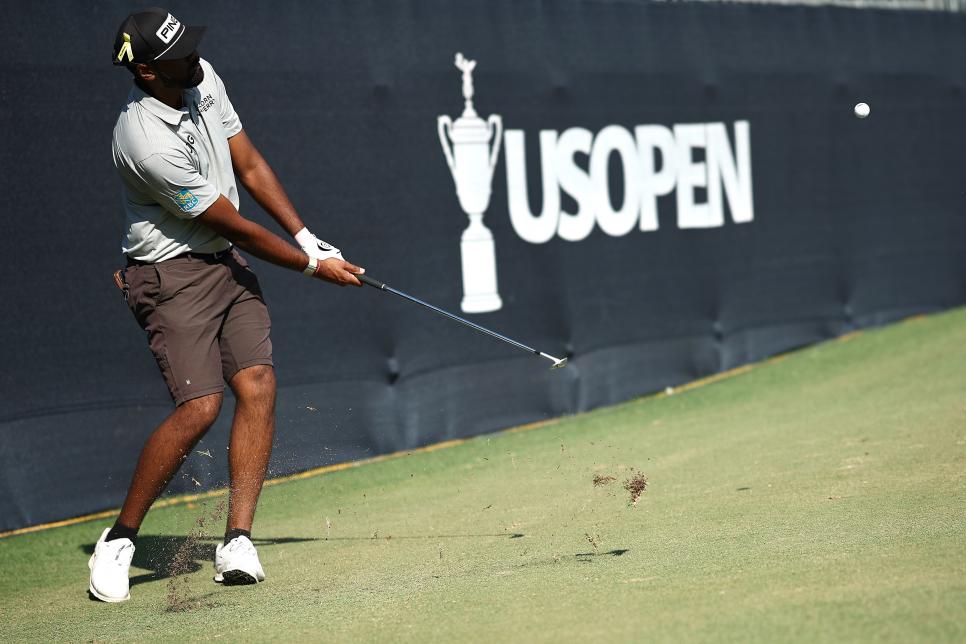U.S. Open 2024: How tour pros pick their misses around Pinehurst’s tricky greens – Australian Golf Digest

- by Admin
- June 12, 2024

As the weather heats up in Pinehurst and the course gets baked out a lot of players are talking about the importance of good misses.
“I went with my caddie and we just were really charting to certain pins, like we’d rather be here than there,” Wyndham Clark said in a press conference on Monday, “Sometimes that almost could mean, not that you’re trying to miss a green, but you’re erring towards the easier up and down.”
And World No. 1, Scottie Scheffler was singing a similar tune in Tuesday’s press conference after his practice round.
“There’s certain holes out here where you have to just step up and hit a great shot,” Scheffler said, “Some of the par-3s, Teddy and I are walking around trying to figure out where you miss it to certain pins. It’s like, there’s not really a good spot here, you’d better just hit it in the middle of the green and try and two-putt.”
But how exactly are the pros determining what their most favorable miss will be this week?
I walked six holes with Carter Jenkins, a Korn Ferry Tour player from Raleigh, during Tuesday’s practice round to find out.
WHY THIS WEEK IS DIFFERENT
At a typical PGA Tour event, the preferred miss is pretty obvious. There’s usually one or maybe two spots around the green where you’ll see most of the pros end up. But according to the players, this week is different.
“…Even going back to last week at Memorial, people hit it offline or people hit a green, you’re basically only seeing players hit one shot. There’s only one option,” Rory McIlroy said in a press conference Tuesday.
“I think a course like this definitely demands a different skill set and also some creativity. I think that will be on display this week,” McIlroy said.
While walking with Jenkins, Carson Schaake and Charlie Reiter, I noticed that each player had a unique approach around the green. But while their shot selection differed, their processes for picking their miss were all pretty similar.
THE FORMULA FOR SELECTING MISSES
Andrew Redington
At Pinehurst No. 2, the formula that each player followed seemed to go something like this:
- Find the flat spots
- Identify the best angle
- Determine the odds
To identify the flat spots on the green, Jenkins’ caddie, Joe, dropped balls in a circle, maybe four or five feet wide, around the 2014 U.S. Open hole locations. He noted the spots where shots would sit and stay and the breaking points where it would run into collection areas around the green.
Simultaneously, Jenkins analyzed the collection areas that surrounded each anticipated hole location. He noted where he had the most green to work with, where slopes were most severe and where the few flat spots were around the green. Which allowed him to determine his best angle into each approximate hole location.
While examining these runoff areas, Jenkins also hit a few greenside shots to see what lie gave him the best odds at getting up and down.
One big thing I noticed from Jenkins’ short game during the practice round was that he stuck to the same shot—for the most part.
If you pay attention this week, it’s something you’ll see from other players in the field. While Jenkins’ preferred shot around the green is the off green putt, some players, like Tiger Woods, it’s the bump-and-run and for others, it could even be a high soft chip.

Jared C. Tilton
Sticking to a single shot around the greens allows players to develop their feel, adjust to the changing conditions and increases their ability to predict the outcome. Which Best in State coach Matt McCullough, who coaches U.S. Open amateur Ben James, says is critical this week out at Pinehurst No. 2.
And it’s the reason you might see more players opt to hit more greenside bunker shots this week.
McCullough explained that greenside bunker shots can be a safer option on No. 2 because the lie is more predictable. Players know how the ball is going to react from the sand. They’re able to spin it and control it better than they would be able to from some of the sticky into-the-grain lies they’ve been getting just off the fringe. Especially when they’re hitting it up a big slope and have very little space to work with at the top.
This article was originally published on golfdigest.com
The Latest News
-
December 27, 2024‘The champ’s back’: Seven-year first sees Smith join legends amid Nadal comparison
-
December 27, 2024Australian Flying Foxes And Lorikeets Mysteriously ‘Fall From The Sky’: Here’s Why
-
December 27, 2024‘Extremely lucky’: Waugh takes aim over Kohli sanction
-
December 27, 2024Moore Park advocates say consultancy fee nearing $1 million is a double-bogey – Australian Golf Digest
-
December 26, 2024Live: Smith century leads Australia to 474 as fast bowlers eye Indian top order





